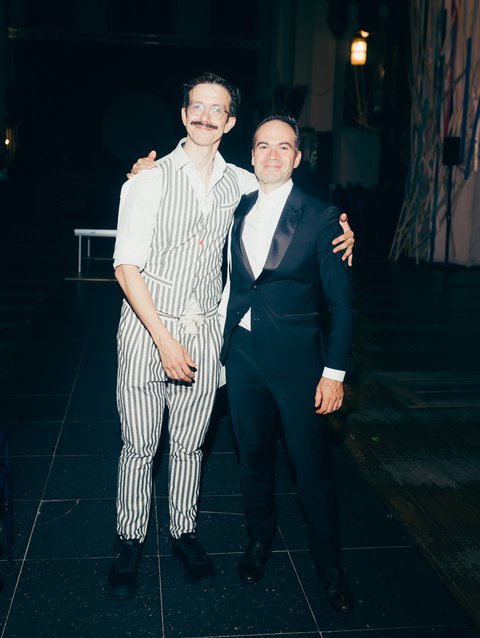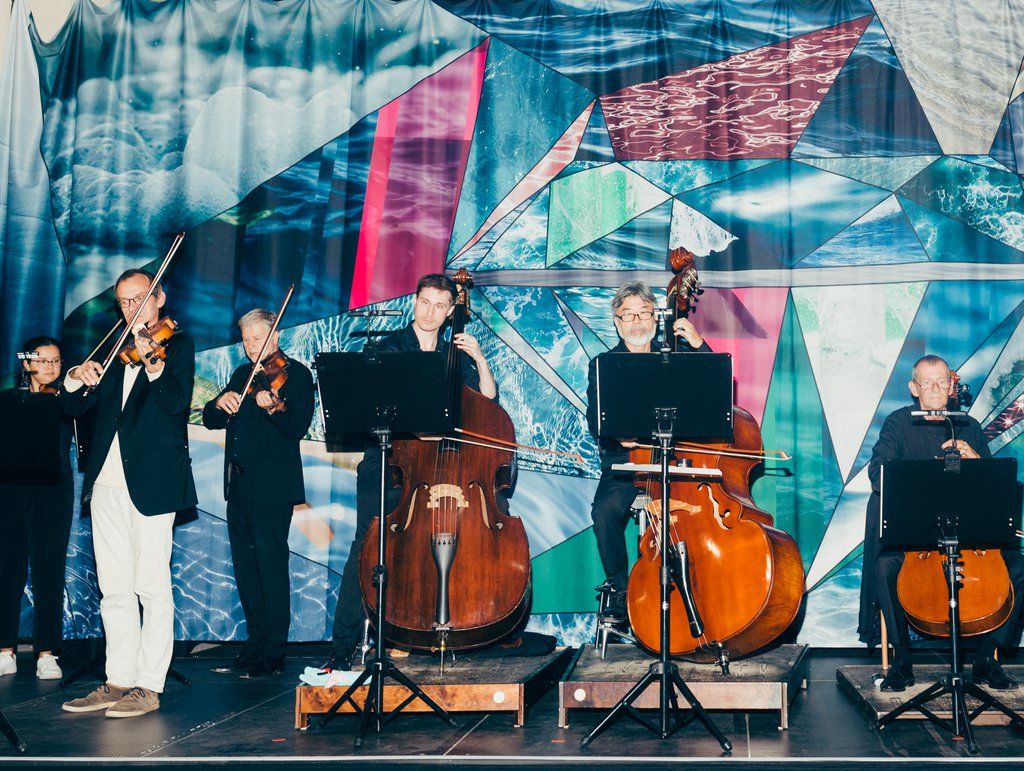»I try to create something beautiful, entertaining, fascinating, new.«
– Iñigo Giner Miranda
#BBpresents
Concert designer Iñigo Giner Miranda

The concert is a centuries-old cultural achievement and institution that has changed time and again. This change continues to this day. Concerts without chairs, with a special sequence of programme items, with light, movement, unusual set-ups in the room – the possibilities are endless.
The Berlin musician and theater artist Iñigo Giner Miranda showed all his genius in the Concert Design field of action of the new fellowship programme at Beethovenfest 2023. He has created two unforgettable concert formats.
»Songs of Life«: Prayers to life
Arias by Puccini and Verdi and the »Four Last Songs« by Richard Strauss: soprano Aušrinė Stundytė was at the centre of Miranda’s first concert in Bonn Minster, accompanied by an intimate chamber ensemble of the Beethoven Orchester Bonn under the direction of Dirk Kaftan. Miranda interwove this sensual vocal music with introspective works by American composers of the 20th century.
What made the concert so special was the seamless sequence of different works and the use of the entire church space, creating an continuous sound experience from the entrance to the end.
»That’s what you call an experience: That I offer you something that hits you in an unexpected way and gives you a new approach to things, to music.«
»Surround Sound«: Inside the orchestral cosmos
What does it actually sound like to sit in an orchestra? Most people are unable to experience this sound in a normal concert unless they play an orchestral instrument in their spare time. Miranda changed this with his concert format »Surround Sound« with the Kammerakademie Potsdam under the direction of Miguel Pérez Iñesta. He uncompromisingly dissolved the separation between audience and orchestra: the result was a movement concert.
Particularly exciting: the two halves of the concert experimented differently with the mobility of the participants. In the first half, it was the audience that was allowed to move freely between the musicians in the unseated church space of the Festival Centre Kreuzkirche. The players stood at music stands distributed throughout the room. You could stand right next to them and listen to Igor Stravinsky’s »Pulcinella Suite« from the perspective of a violist or cellist in the ensemble.
In the second half of the concert, the tables were turned. The audience sat in fixed seats, while the musicians constantly changed their positions between the music stands scattered around the room during the performance. This was ideal for the sonic realisation of Richard Strauss’ »Metamorphosen«: The orchestral sound kept changing as the individual parts of the complex score were constantly heard from different angles of the room. And the piece sounded different for every listener.
»The boundaries between music and theatrical performance are beginning to blur.«
It wasn’t just the movement direction that was theatrical, but also Miranda’s extraordinary lighting concept, which completely transformed the space with sharp spotlights, dancing light rays and fog. A magical concert that particularly touched many visitors.
The concert in transition
Iñigo Giner Miranda’s mission is to rethink the concert and explore more ways in which we can listen to music together. He is convinced that people want places where they can experience the intensity of live music.
»I hope that the classical music industry will move in this direction, that we will create a variety of approaches that fulfil this need for a meditative place to encounter music.«

The concerts in Beethovenfest 2023 designed by Iñigo Giner Miranda
- , Bonner Münster
Songs of Life
Beethoven Orchester Bonn, Aušrinė Stundytė, Konstantin Bruns
Bryars, Anderson, Verdi
- , Festival Centre at the Kreuzkirche
Surround Sound
Kammerakademie Potsdam, Miguel Pérez Iñesta
Strawinsky, Strauss










